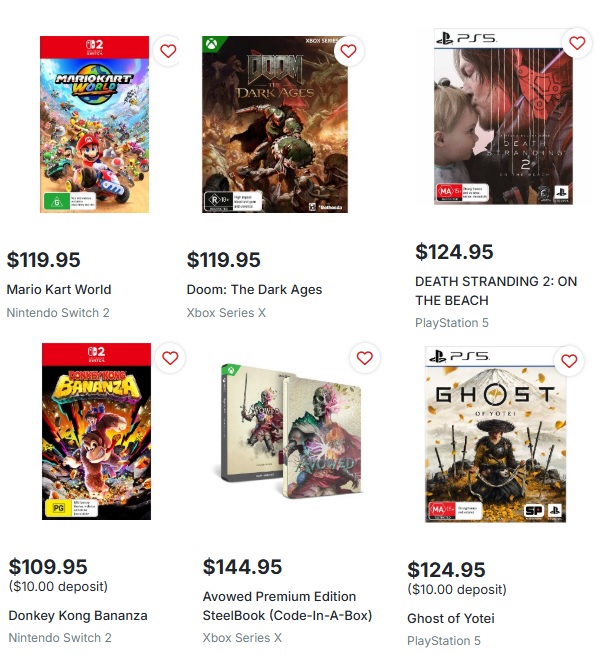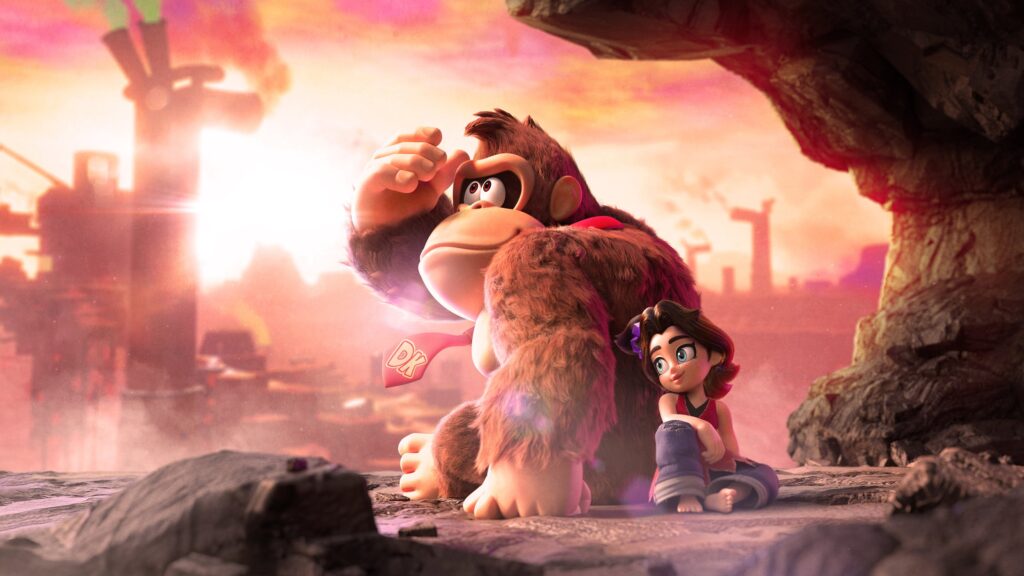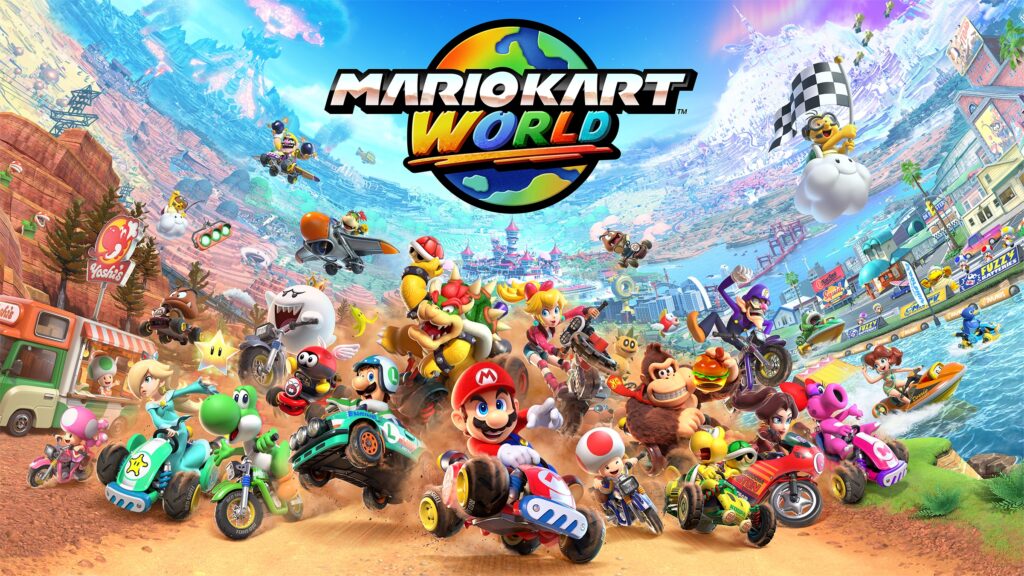As I write, it has been almost a month since the Nintendo Switch 2 released worldwide. This was long expected and rumoured but not officially announced until early this year which was likely prompted by increasing media leaks online. Though the announcement was initially well-received, the Nintendo Direct presentation dedicated to it was received less positively for a number of reasons.
These reasons included a title Nintendo Switch 2 Welcome Tour being a paid digital release when the title’s premise is based entirely around promoting the new hardware and features. The introduction of ‘Game-Key Cards’ which are physical cards that allow you to download and play the purchased game though containing no game data. The paid ‘Nintendo Switch 2 Edition Upgrade’ packs for Switch titles most notably for The Legend of Zelda: Breath of the Wild and its direct sequel. The most controversial though was the pricing and most notoriously the $80US cost of the marquee launch game Mario Kart World. These controversies had many on various websites, within comment sections and social media platforms declaring they weren’t going to buy it.
Though I was certainly bothered by a couple of things, I did purchase it on launch; mainly because the positives outweighed the negatives and given the long support life for the original Switch (that I purchased in the second half of 2017), which is still going strong. Some initial impressions and my response to some of the controversy follow.
The first thing I want to address is the new game pricing because this has been the most significant criticism levelled at Nintendo. It must be remembered that this is mainly in the context of the United States where they have long enjoyed a $60US (or $59.99) standard retail price for most game releases. This was increased to $70US with some notable titles a few years ago including The Legend of Zelda: Tears of the Kingdom though not without grumbling even then. It seems $80 was truly beyond the pale as it certainly provoked a lot of online outrage.
Now I don’t want to be the guy that defends the multibillion dollar company’s pricing but this is a case where despite all my own prejudices, I feel obligated to do so. Mainly because having grown up outside the USA, I have been accustomed to even higher prices than this for decades. It was not uncommon to see $99.95 or more on Australian video game releases in the 1990s when our own dollar had much more value than it does now. Inflation has made games cheaper even though the retail price for Switch games (usually $79.95), increased here too. I understand this is true of many countries outside of the US and certainly in Nintendo’s native Japan. It was the size and value of the market in the United States that kept this standard up until now and it is a price point that clearly isn’t working anymore for a variety of reasons.
The main question I have about all of this is why it was Nintendo specifically that took all the flack for this and indeed a number of other things their competition is already doing? Below is an image of two recent or upcoming releases for the three major platforms which is taken from the EB Games Australian website. To add some context, EB usually charges the RRP and many other retailers do undercut these prices.

The first point to make is that the two major PlayStation 5 releases for this year are both priced higher than Mario Kart World. A quick check of US retailer Best Buy shows these two titles ten dollars lower than Mario Kart World but this is not so in our market and presumably many others. In fact, for most of the original Switch’s retail life (and still as of now), the standard price point was $79.95 with Xbox Series X and PlayStation 5 releases being noticeably more expensive. As for the Xbox titles, both of these are admittedly available with a much cheaper Xbox Game Pass subscription but these are the prices if you want the physical versions. I included Avowed because this is the only retail edition available and despite being the most expensive, does not even include physical media. One final point to make on this is that both Nintendo titles will likely retain their value while the Xbox and PlayStation releases will drop significantly in price within a year of release. I make no statement about whether or not Nintendo’s pricing is right or wrong, I just want to show here that in my region at least, their pricing is at worst equal to that of their competition. I could bolster all this by showing Steam prices for digital games but I think my point is made without that.
Next we’ll look at ‘Game-Key Cards’ which are understandably bothersome for those who value actually owning what they pay money for. Beginning in the Xbox 360, PlayStation 3 and Nintendo Wii era, it became increasingly common to receive some sort of code in retail boxes and this quickly extended — particularly on PC releases — to buying a plastic box with a one-use code fore the entire game. Many games now come with huge day one patches and some that come on physical media are not actually playable out of the box at all. There is now an entire website dedicated to whether or not physical releases are playable out of the box. Nintendo, to their credit, has not to my knowledge done this with any of their own retail releases. There are games like the Splatoon series where most of the content is found online but even these have a single-player component that can still be used without online servers out of the box.
Many Switch physical releases from third-party publishers came with only a portion of their games on the game card and a code included to access the rest. This was a one-time use code too which meant the game could not be resold as most if not all, of the content was not available on the card itself. So the ‘Game-Key Cards’ are hardly something to celebrate but these at least can be lent to friends and even sold as long as the eShop servers are running. This is much better than what the competition is offering and it is made quite clear what you’re getting on the packaging too. I won’t buy games like this but I would be much more comfortable with buying these than a code-in-a-box.
Once again, I am baffled as to why Nintendo is getting most of the flak for this. Sony and Microsoft both released digital-only variants of their consoles. Sony did this as far back 2009 with the PSP Go — a device now completely useless unless the firmware is modified. Both have been significantly more aggressive in moving away from physical media while Nintendo simply offers third-parties the option to do the same. CD Projekt has at least demonstrated that large games can be released physically with their port of Cyberpunk 2077.
As for some of the other criticisms, I am more or less in agreement. I really think Nintendo Switch 2 Welcome Tour should have been included with every Switch 2 sold; at least initially. What better way to sell the console than a game that shows its new features? As it is, I simply did not buy it and have no intention to in the future. The upgrades offered for titles like Super Mario Party Jamboree and Kirby and the Forgotten Land as well as the previously mentioned Zelda titles are not appealing to me though I did upgrade my Nintendo Online subscription for the latter. These once more are no different to what happened with PlayStation 4 re-releases on the PlayStation 5 such as The Last of Us Part II. Nobody has to get them but they are genuine improvements over the originals. The one thing I do think was unnecessarily cheap was not including the DLC content for Breath of the Wild on the Switch 2 re-release.
This leads into what is often not mentioned and is still being discovered as I write. Nintendo advertised that basically the entire Switch library with a few specific exceptions, is available on Switch 2. This has been true of all the games I’ve tested but what has been a particular surprise is that many of these games now run much better. A great example is Mario + Rabbids: Kingdom Battle which runs at 60FPS on Switch 2 and has notably faster load times. Most of the games I’ve tested have either a more stable or faster framerate. So the Switch 2 is already a better console to use for many Switch games.
With Switch 2 titles, it is a different story. On launch, only Mario Kart World appealed though there are certainly other great games available. As I can play many games on PC, I am not that interested in most third-party titles but this won’t be true for many buying the console. The main reason I wanted a Switch 2 on launch was for the upcoming Donkey Kong Bananza which releases later this month.
Mario Kart World is one of those evergreen titles that many won’t just play through once and forget but go back to many times. I bought it more out of obligation but it is certainly a fun game. In fact, one could justify the price hike by pointing out you’re really buying a $60 game and a $20 Jazz fusion album. The game’s soundtrack and overall presentation is simply outstanding. The new Knockout Tour mode is one of the best new features the series has ever had and is really impressive to see how seamlessly the tracks connect across the open world. I wouldn’t say I’d spent enough time to give a full review but my initial impressions are very positive.
I don’t have much to add about the hardware itself. It makes a number of improvements over the original Switch but still feels familiar. Like most who spend money on game consoles, it is the games that are of particular interest and there are a number of great upcoming titles to look forward to.


